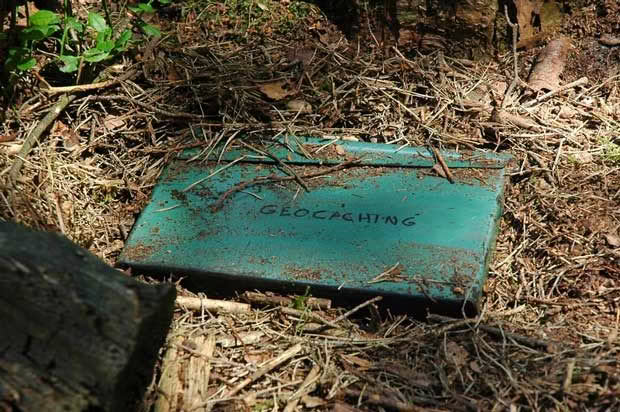Modern day treasure hunters: geocaching in New Zealand

Sophie Armitage is just one of millions taking part in a worldwide treasure hunt, where the prize is prestige and may be hidden just around the corner
Words: Cheree Morrison
This article was first published in the May/June 2016 issue of NZ Life & Leisure.
Of all the days to forget a magnet, this was not a good one. Crouched in a side alley in central Auckland, Sophie is stuck. Not physically, but mentally – the magnet that she thought should be attached to the lid of a well camouflaged PVC pipe, glued to the side of a brick building, is missing. After 10 minutes of searching, wiggling and poking, she sighs and gives up. The pipe keeps its secrets – for now.
Confused? That’s all right; most will be. But there will be a small number who are nodding in sympathy, recognizing Sophie’s frustration. They are fellow geocachers, a growing group of approximately 10,000 New Zealanders who use a free app and website to scour the country (and the world) for hidden “caches” like Sophie’s piece of pipe. There are more than 25,000 caches hidden in New Zealand and another 2.5 million worldwide, with thousands added daily. Sophie alone has found more than 9000 caches since a friend’s mum told her about the hobby during a visit to New Zealand in 2011.
On a recent two-day trip to New Plymouth she located more than 200 caches – keeping her on track to meet her goal of finding 10,000 by Labour Weekend 2016.
The task of finding a cache can be broken down into a few of simple steps. Step one: open the free geocaching app and turn on location. All nearby caches will appear marked by a coloured dot. Step two: select a cache and using either a phone or GPS, travel to the marked location. Step three: using the hint, locate the cache (without raising suspicion and watching out for “muggles”, or non-cachers).
Successful? There’s a piece of paper to write a username on, then mark it as found on the app – another one ticked off. While locating a geocache can be a straightforward affair, finding it can be another story. The cache itself can be anything from a lip-balm container to a Tupperware box, and they are ranked from one to five for the difficulty to find and terrain. The colour dot on the map relates the type of cache it is, from traditional to mystery caches. There are plenty of free caches to find but to find more requires the user to sign-up as a premium member.
By day, Sophie works for the Blind Foundation but she moonlights as the unofficial events coordinator for the New Zealand geocaching community. She’s currently organizing a mega event for Labour Weekend, which will see about 500 geocachers come together to swap tips, tell tales and finally put faces to the geocaching usernames. (Sophie is yorkshirekiwi83.) On a smaller scale, there are CITO (Cache In Trash Out) events, where geocachers and local councils join forces to clean up parks and walking tracks.
It’s a general rule of geocaching; always leave the area cleaner than on arrival. Right now there are thousands of people searching for hidden objects and quietly cleaning the country as they go. (Makes you smile, doesn’t it?)
There are other benefits too, says Sophie. “It’s a great way to get exercise; often I get so distracted by searching that I find myself miles away from my car. A lot of parents use it as family time; it teaches kids how to use a GPS and to be more observant of the world around you. It’s also great for meeting people – we can do it alone but it’s more fun in a group.”
It’s less likely to raise suspicion too, especially for male geocachers. Occasionally the police show up to have a chat with the person acting “strangely” in a park or public area – officers are now well versed in geocaching, but it’s still relatively unknown to muggles.
While some caches are too small to hold anything more than a slip of paper, a few have hidden surprises. Trackables are little items with a code that is tracked via the app; finders take it with them from cache to cache. A friend of Sophie’s has a small hot-dog-carrying kiwi key ring that has travelled throughout Canada, the Galápagos Islands, most of Europe and stopped over in Australia – all in less than a year. A flying kiwi, who knew?
WHAT IS GEOCACHING?
• Geocaching officially began in 2000 with American company Groundspeak, which runs the official app and website. Germany is the most active geocaching nation but New Zealand was the first country outside of the States to have a cache placed and recorded.
• Sophie recommends carrying a torch, tweezers and a magnet. She used to use a GPS but it recently went swimming in a river.
• Like all sports and hobbies, there are rules. Geocaching is the go-to website but New Zealanders.
Love this story? Subscribe now!
 This article first appeared in NZ Life & Leisure Magazine.
This article first appeared in NZ Life & Leisure Magazine.
